Home » News & Events » International Day of Climate Action
International Day of Climate Action
Citizens, scientists and world leaders in 181 countries are taking to nearby streets, mountains, parks, and reefs today to demand strong action on climate change, in what will be the most widespread day of political action in the planet's history.
More than 5,000 rallies and creative demonstrations are taking place, all of them centered on the number 350, to draw attention to 350 parts per million (ppm), which an overwhelming number of scientists now insist is the safe upper limit for carbon dioxide in the atmosphere.
Windustry is partnering with wind farm sites across the country to show support by displaying ‘350’ banners and flags on wind turbines, demonstrating that wind energy is part of the solution to reduce carbon emissions by providing clean sustainable energy, and wind power installations are competitive and cost-secure compared with other power technologies. We'll post photos as they come in.
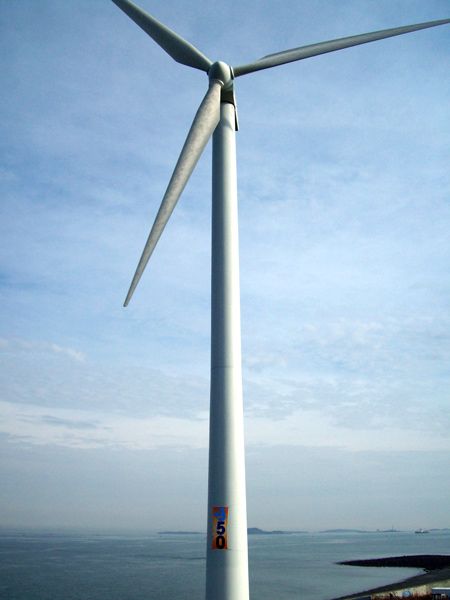
Hull Wind I is 164-foot-tall 660-kilowatt Vestas turbine on "Windmill Point" in the small town of Hull, Massachusetts, across the bay from the city of Boston, installed in 2001 by Hull Municipal Light Plant (HMLP), a municipally owned utility. In 1998 a group of citizens eager to see a locally owned wind energy project formed themselves into C.A.R.E. (Citizen Advocates for Renewable Energy), selected officers Malcolm Brown and Andrew Stern, and petitioned Hull Light to take the project on.
Based upon the success of Hull I, a second larger turbine was considered. By May of 2006, Hull Wind 2 was commissioned (a Vestas V80, rated at 1.8 megawatts). In its first year it produced 4,088,000 KWh's, and townsfolk showed considerable pride in the results. Six state and national awards had meantime accumulated. One commissioner joked “we have run out of wall space in our the Light Plant's offices to hang our award plaques—some will have to be moved to Town Hall.” Over 10% of the town's entire consumption of electric energy is being supplied by this pair of turbines.
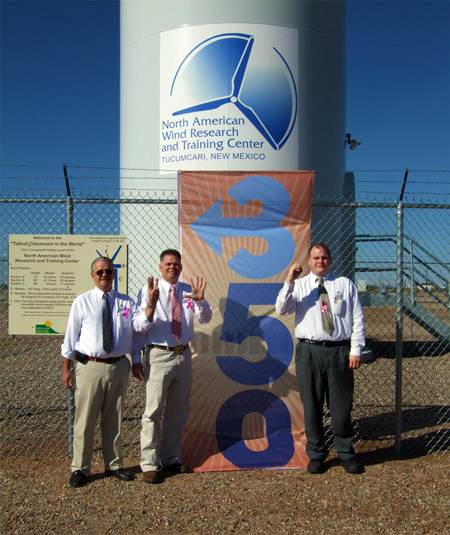
Picture taken at North American Wind Research and Training Center (NAWRTC) on Mesalands Community College campus in Tucumcari, New Mexico. From left to right are Jim Morgan, Director of North American Wind Research and Training Center, John Hail Jr., Director and Instructor of the Wind Energy Technology Program, and Troy Carpenter, Instructor of the Wind Energy Technology Program. In the background is the GE 1.5 megawatt turbine used for the training program. The program offers a one-year certificate and a two-year degree in wind energy technology.
Establishment of NAWRTC began in October 2008 with the installation of the 1.5 megawatt wind turbine at Mesalands to give students the opportunity to gain hands-on experience in the operation and maintenance of wind turbines. Construction of the training center is the next phase in developing the wind energy technology program at the college. Mesalands, through NAWRTC, also expects to conduct research related to operations maintenance and reliability with Sandia National Laboratories. The proposed training center is approximately 30,000 square feet and will contain a display area, lecture hall, classrooms, offices, and hydraulic and electric labs. Construction is expected to be complete in November 2010.
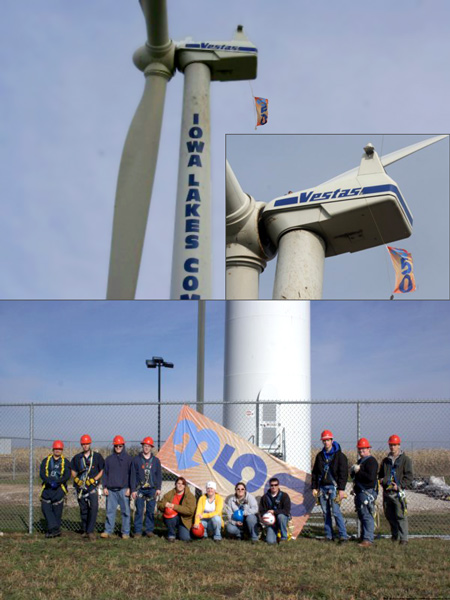
More than 5,000 rallies and creative demonstrations are taking place, all of them centered on the number 350, to draw attention to 350 parts per million (ppm), which an overwhelming number of scientists now insist is the safe upper limit for carbon dioxide in the atmosphere.
Windustry is partnering with wind farm sites across the country to show support by displaying ‘350’ banners and flags on wind turbines, demonstrating that wind energy is part of the solution to reduce carbon emissions by providing clean sustainable energy, and wind power installations are competitive and cost-secure compared with other power technologies. We'll post photos as they come in.

Hull Wind I, Hull, Massachusetts
Hull Wind I is 164-foot-tall 660-kilowatt Vestas turbine on "Windmill Point" in the small town of Hull, Massachusetts, across the bay from the city of Boston, installed in 2001 by Hull Municipal Light Plant (HMLP), a municipally owned utility. In 1998 a group of citizens eager to see a locally owned wind energy project formed themselves into C.A.R.E. (Citizen Advocates for Renewable Energy), selected officers Malcolm Brown and Andrew Stern, and petitioned Hull Light to take the project on.
Based upon the success of Hull I, a second larger turbine was considered. By May of 2006, Hull Wind 2 was commissioned (a Vestas V80, rated at 1.8 megawatts). In its first year it produced 4,088,000 KWh's, and townsfolk showed considerable pride in the results. Six state and national awards had meantime accumulated. One commissioner joked “we have run out of wall space in our the Light Plant's offices to hang our award plaques—some will have to be moved to Town Hall.” Over 10% of the town's entire consumption of electric energy is being supplied by this pair of turbines.

North American Wind Research and Training Center, Tucumcari, New Mexico
Picture taken at North American Wind Research and Training Center (NAWRTC) on Mesalands Community College campus in Tucumcari, New Mexico. From left to right are Jim Morgan, Director of North American Wind Research and Training Center, John Hail Jr., Director and Instructor of the Wind Energy Technology Program, and Troy Carpenter, Instructor of the Wind Energy Technology Program. In the background is the GE 1.5 megawatt turbine used for the training program. The program offers a one-year certificate and a two-year degree in wind energy technology.
Establishment of NAWRTC began in October 2008 with the installation of the 1.5 megawatt wind turbine at Mesalands to give students the opportunity to gain hands-on experience in the operation and maintenance of wind turbines. Construction of the training center is the next phase in developing the wind energy technology program at the college. Mesalands, through NAWRTC, also expects to conduct research related to operations maintenance and reliability with Sandia National Laboratories. The proposed training center is approximately 30,000 square feet and will contain a display area, lecture hall, classrooms, offices, and hydraulic and electric labs. Construction is expected to be complete in November 2010.

Iowa Lakes Community College, Estherville, Iowa
The Iowa Lakes Community College Wind Energy Club hung a 350 flag from the Vestas 1.65 megawatt wind turbine that provides both electricity for the campus and a hands-on training opportunity for students. Pictured from left to right are Mike Gengler, Mike Sauch, Kevin Klein, Tim O'Brien, Dion Higgins, Melissa Radmaker, Loma Roggenkamp, Tim Moon, Landon Baker, Chris Nemmers, and Holland Gilmore. The Wind Energy and Turbine Technology Program at Iowa Lakes Community College is the first in the state of Iowa, with both a diploma program and a Associate in Applied Science degree. Since the number of wind turbines in the state of Iowa is growing quickly, Iowa Lakes Community College is working to help meet the growing demand for skilled technicians who can install, maintain, and service modern wind turbines.Post a Comment:
You may also like:

Featured Articles
Environmental Impacts of Wind Industry
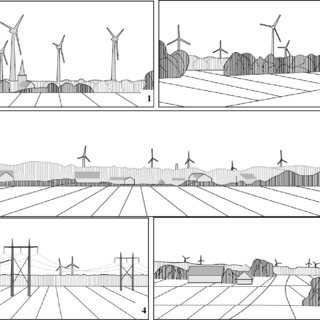 In recent years, the growth of capacity to generate electricity from wind energy has been extremely rapid, To the ...
In recent years, the growth of capacity to generate electricity from wind energy has been extremely rapid, To the ...
 In recent years, the growth of capacity to generate electricity from wind energy has been extremely rapid, To the ...
In recent years, the growth of capacity to generate electricity from wind energy has been extremely rapid, To the ...Wind Energy Cost Trends
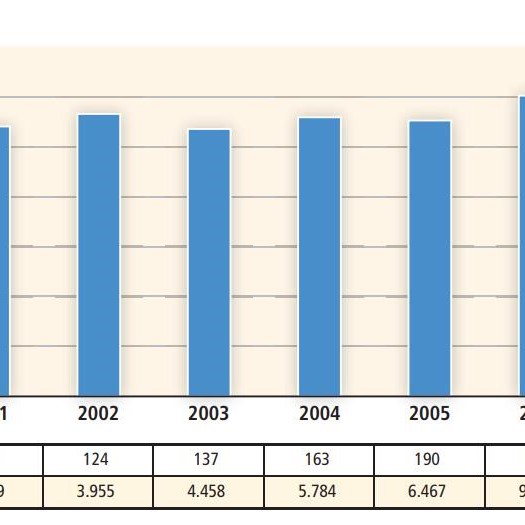 Though the cost of wind energy has declined significantly since the 1980s, policy measures are currently required to ensure ...
Though the cost of wind energy has declined significantly since the 1980s, policy measures are currently required to ensure ...
 Though the cost of wind energy has declined significantly since the 1980s, policy measures are currently required to ensure ...
Though the cost of wind energy has declined significantly since the 1980s, policy measures are currently required to ensure ...Employment Impacts of Wind Industry
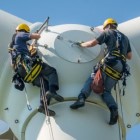 As with most construction and commercial development, wind energy industry create jobs. According to the 2016 Clean Jobs New ...
As with most construction and commercial development, wind energy industry create jobs. According to the 2016 Clean Jobs New ...
 As with most construction and commercial development, wind energy industry create jobs. According to the 2016 Clean Jobs New ...
As with most construction and commercial development, wind energy industry create jobs. According to the 2016 Clean Jobs New ...Challenges in Wind Industry
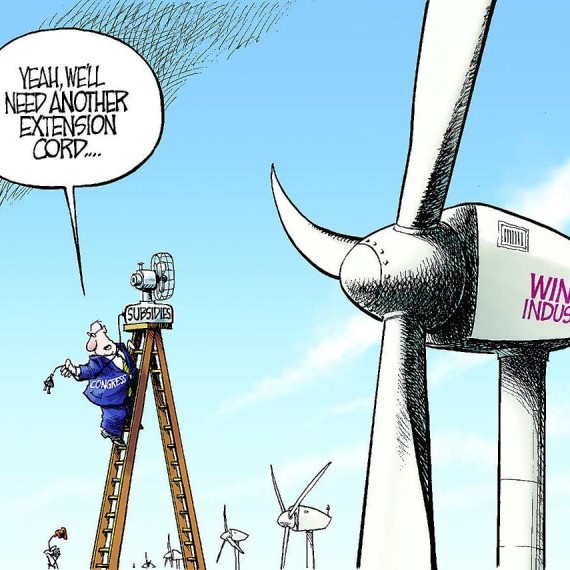 While wind power generation offers numerous benefits and advantages over conventional power generation, there are also some ...
While wind power generation offers numerous benefits and advantages over conventional power generation, there are also some ...
 While wind power generation offers numerous benefits and advantages over conventional power generation, there are also some ...
While wind power generation offers numerous benefits and advantages over conventional power generation, there are also some ...Economic Impacts of Wind Industry
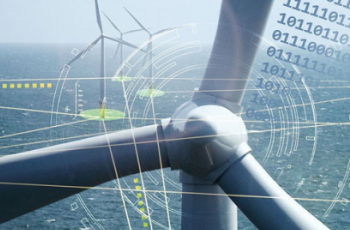 Any business development will have economic impacts on the local and regional economies, and wind energy projects are no ...
Any business development will have economic impacts on the local and regional economies, and wind energy projects are no ...
 Any business development will have economic impacts on the local and regional economies, and wind energy projects are no ...
Any business development will have economic impacts on the local and regional economies, and wind energy projects are no ...